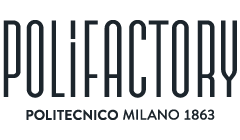
Francesca Fedele
Product Designer - Talent in Residence
She was born in 1999 in the Novara countryside. At the end of her high school art course, in 2018 she enrolled in the Industrial Product Design course at the School of Design at the Politecnico di Milano. After obtaining her Bachelor’s degree, she decided to continue at the same university with the Master’s degree course in Integrated Product Design. During her studies, she learned how the designer’s role is fundamental in understanding users’ needs in order to set new design goals. Furthermore, during the last academic year, she dedicated herself to projects focused on sustainability and circularity of the product-service system. For this reason, she developed a strong interest in biomaterials and the opportunities they can provide, both on a technical and sensory level, for the design of innovative products.
ABSTRACT
This thesis aims to investigate the possible potential of the combined growth of Mycelium and Bacterial Cellulose. Scientific experimentation is increasingly focusing on the testing of biomaterials. Indeed, they are fundamental for the ongoing ecological transition, to bring sustainable alternative materials to the market, with a lower environmental impact. Moreover, with active experimentation, the designer can be more aware and active in changing and designing with biomaterials. Bacterial cellulose, which has already been widely used and tested in the field of biomaterials, is still an unstable material, subject to change due to humidity, different temperatures, and the passage of time. In contrast, mycelium, especially in the form of ‘skin’, is impermeable and resistant over time. This research aims to test, using different approaches, the biocompatibility of the two above-mentioned materials to combine their functional properties and develop a new multi-organism composite material. The ultimate and fundamental aim of the thesis is to understand the possible capabilities and facets of the material to be able to identify a specific application method and the consequent development of a coherent and innovative product concept that can make the most of its material, visual and sensorial properties.


